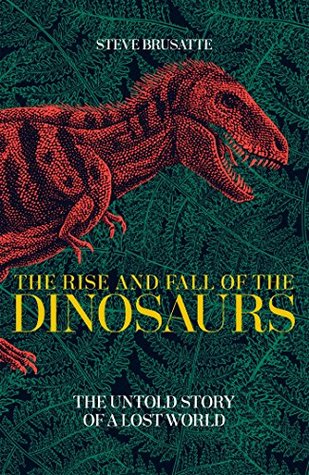More on this book
Community
Kindle Notes & Highlights
Read between
December 17, 2023 - June 7, 2024
They became supremely well adapted to their environments, but in the end, most of them went extinct when they couldn’t cope with a sudden crisis. No doubt there is a lesson there for us.
There have been five particularly severe mass extinctions over the past 500 million years. The one 66 million years ago at the end of the Cretaceous period, which wiped out the dinosaurs, is surely the most famous. We’ll get to that one later. As horrible as the end-Cretaceous extinction was, it had nothing on the one at the end of the Permian. That moment of time 252 million years ago, chronicled in the swift change from mudstone to pebbly rock in the Polish quarry, was the closest that life ever came to being completely obliterated.
The Earth formed about 4.5 billion years ago, and the first microscopic bacteria evolved a few hundred million years later. For some 2 billion years, it was a bacterial world.
Then there are proper crocodiles, but nothing like the ones we’re familiar with today. These primitive Triassic species—the ancestral breed that modern crocs evolved from—looked like greyhounds: they were about the same size, stood on four legs, had the emaciated build of a supermodel, and could sprint like champions.
Tyrannosaurus rex—a beautiful combination of Greek and Latin that means “tyrant lizard king”
Like any good celebrity, Brown was an eccentric. He hunted fossils in the dead of summer in a full-length fur coat, made extra cash spying for governments and oil companies, and had such a fondness for the ladies that rumors of his tangled web of offspring are still whispered throughout the western American plains.
T. rex had an EQ in the range of 2.0 to 2.4. By comparison, our EQ is about 7.5, dolphins come in around 4.0 to 4.5, chimps at about 2.2 to 2.5, dogs and cats are in the 1.0 to 1.2 range, and mice and rats languish around 0.5. Based on these numbers, we can say that Rex was roughly as smart as a chimp and more intelligent than dogs and cats.
Without some parental love, the baby dinosaurs would have been hopeless, because they were tiny: no dinosaur eggs that we know of are larger than a basketball, so even the mightiest species like T. rex would have been, at most, the size of a pigeon when they entered the world.
It brings to mind an evocative image: these dinosaurs probably moved across Late Cretaceous western North America in vast herds, many thousands strong, rumbling the ground and kicking up clouds of dust as they plowed across the landscape, not much unlike the bison that would conquer the same plains many millions of years later.
winged dinosaurs were a rainbow of different colors. Some were even iridescent, like those of today’s shiny-sheened crows. Colorful wings like these would have been perfect display instruments—just like the fabulous tail of a peacock. Although it doesn’t definitively prove that these dinosaurs were using their wings for display, it is solid circumstantial evidence.
A comet or an asteroid—we aren’t sure which—collided with the Earth, hitting what is now the Yucatán Peninsula of Mexico. It was about six miles (ten kilometers) wide, or about the size of Mount Everest. It was probably moving at a speed of around 67,000 miles per hour (108,000 kilometers per hour), more than a hundred times faster than a jet airliner. When it slammed into our planet, it hit with the force of over 100 trillion tons of TNT, somewhere in the vicinity of a billion nuclear bombs’ worth of energy. It plowed some twenty-five miles (forty kilometers) through the crust and into the
...more


